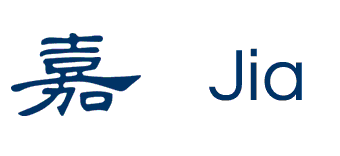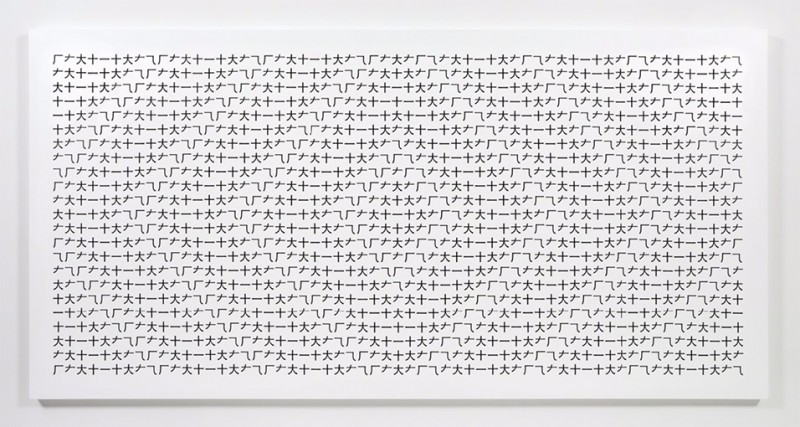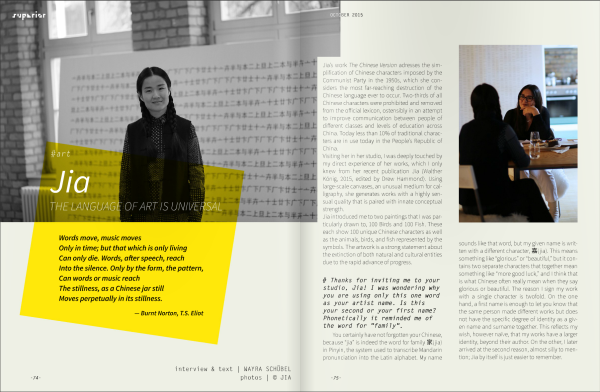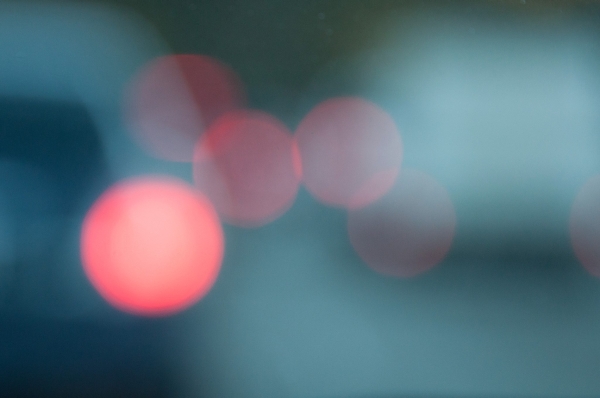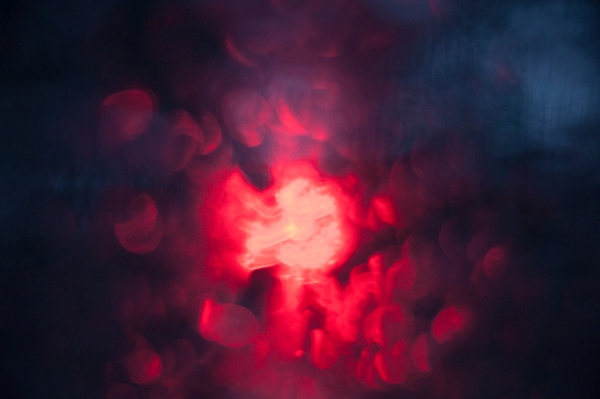By moving between the cultural spheres of China and Germany, the value of language and cultural preservation looms large in Berlin-based artist Jia’s practice. Known for her series “The Chinese Version” (2011– ), in which well-known and forgotten Chinese characters form geometric shapes on canvas, the artist’s interest in disappearing cultural phenomena goes well beyond the written language within her multifaceted practice of performance, conceptual art and social engagement that stems from her formative years in film, Chinese opera and architecture. ArtAsiaPacific caught up with Jia in her charming studio between piles of books, a small stage, and a ballet barre to talk about her cultural transit, the loss of languages and her current art projects.
Jia’s paintings immediately evoke the sense of mass production‚ as though perfectly made by machines. The Beijing-born and now Berlin-based artist invites the viewer to come closer, to investigate the general tension between the two cultures. Here, Jia speaks to Ala Glasner and Julia Rosenbaum as part of their Studio Visits series, to discuss her work in detail and her eclectic educational background as well as her relationship to the People’s Republic of China and the loss of many Chinese characters.
Ihr Kunstwerk „Mini-Shop“ erinnert an eine Art Kiosk, in welchem es abgepackte Nudeln und Süßigkeiten gibt. In den Regalen hängen Kinderzeichnungen und kleine, bunte Figuren aus Knete und Ton, welche von chinesischen Waisenkinder aus der Provinz Sichuan gebastelt worden sind. „Solche Mini-Shops sind in China weit verbreitet“, sagt Jia, „und sie haben für viele Kinder in ihrem tristen Alltag eine besondere Bedeutung, da sie sich für wenig Geld etwas Schönes kaufen können […]
In Paintings and Sculptures, Two Artists Deconstruct the Architecture of Life | by Bridget Gleeson
August 11, 2016
Together, the two artists challenge the viewer to consider the architecture of our lives—our buildings and language—and how the pieces, once broken, might be rebuilt.
One of Mao Zedong’s more insidious achievements in mainland China was the Chinese character simplification program. With the supposed intent of improving literacy, the program reduced the number of strokes deployed in writing characters, effectively neutering the written language’s pictographic and ideographic content […]
Symbols dance across the canvas, forming wave patterns, rhomboids or squares. Abbreviations and iterations of traditional, simplified and imaginary versions of Chinese characters are ordered in nonsense sentences, their expressive power limited to the aesthetic. […]
THE CHINESE VERSION | “O FAN OF WHITE SILK, CLEAR AS FORST ON THE GRASS-BLADE” SURFACE AND SEMANTICS IN THE CHINESE VERSION | by Onna Lochner
November 25, 2015
The work of Chinese artist Jia, a trained architect who has also studied Chinese literature and calligraphy, comprises painting as well as photography and performance. In her painting series The Chinese Version, Jia juxtaposes industrial typography with painterly skill, meaning with appearance, and a memory of literature’s flamboyance with formalistic visuality. […]
Jia’s work The Chinese Version adresses the simplification of Chinese characters imposed by the Communist Party in the 1950s, which she considers the most far-reaching destruction of the Chinese language ever to occur.
A Cultural atrocity might not be just the systematic destruction of cultural heritage by Isis; according to Jia ‘ s The Chinese Version, currently on view at the ZKM | Center for Art and Media Karlsruhe as part of the exhibition Infosphere, the simplification program, which targeted the more than 3.300 years old Chinese […]
The cultural atrocity of Chinese character simplification that began in the 1950s and remains, by force of law, in the People’s Republic of China through the present day, has not only degraded the aesthetic properties of the Chinese written character […]
WDR | Die Schönheit der Schrift | “The Chinese Version” von Jia im ZKM Karlsruhe | by Jochen Stöckmann
September 3, 2015
Die Malerin Jia kopiert industriell gefertigte Schriftzeichen, chinesische Typographie. Was nach beliebigen Texten aussieht, ist durchsetzt von “verlorenen”, nach Maos Schriftreform von 1955 verbotenen traditionellen Zeichen. Damit zeigt die Architektin und gelernte Kalligraphin ein sehr besonderes China-Bild im ZKM Karlsruhe.
The language of art is universal. When artists migrate, this experience brings a creative energy that is an essential element of art production in the 20th and 21st centuries. A young Chinese artist has settled in Berlin in order to practice calligraphy, providing her with the necessary distance from the destruction of traditional Chinese characters […]
There are no limits to the interior dialogue of the soul with itself. With this thesis, I would oppose the suspicion that language is an ideology. Gadamer, Truth and Method In her own written statement on The Chinese Version paintings, Jia (b. Beijing, 1979) leaves no doubt that the series arises from her outrage over […]
Jia (b. 1979) is an artist who lives and works in Berlin. She was born in Beijing in the People’s Republic of China where she studied architecture, performance and literature. In this interview she reflects on her development as an artist, the problems of translating artistic practice between differing cultural contexts and the intended critical […]
Until the trip that is the point for departure for The Road Series, the artist had lived her entire life in Beijing, where, after the selection of her first installation for the Shanghai Biennale while she was an architecture student, she began to work for Ai Weiwei. These years coincided with the culmination of the […]
